The human context of marine conservation and why it matters
Many of the ways in which activists and non-profit organizations communicate about the threats to our planet are built around fear, sadness, or anger. This tendency is understandable, as our actions have led to planetary changes in climate, habitats, and species to a degree our grandparents wouldn’t have believed possible. Often, environmental outreach campaigns are designed to tap into our outrage, in an effort to drive us to take some desired action. Sometimes this takes the form of vilifying particular groups, like the fishermen harvesting sharks we care deeply about or the farmers clear-cutting precious forest in order to graze cattle.
You do not have to believe that overfishing sharks or destroying forests is right, however, to recognize the humanity of the people who do those things, or try to understand the reasons why they occur. When you consider conservation issues, it’s worth remembering that nearly all people are pretty much like you, and that we all share similar concerns about how to make a living and care for those we love. It is easy (and psychologically more comfortable) to emphasize the harm caused by others—those “monsters” who are destroying the environment—than to acknowledge the ways that choices we each make about the products we buy or the way we live contribute to the problem.
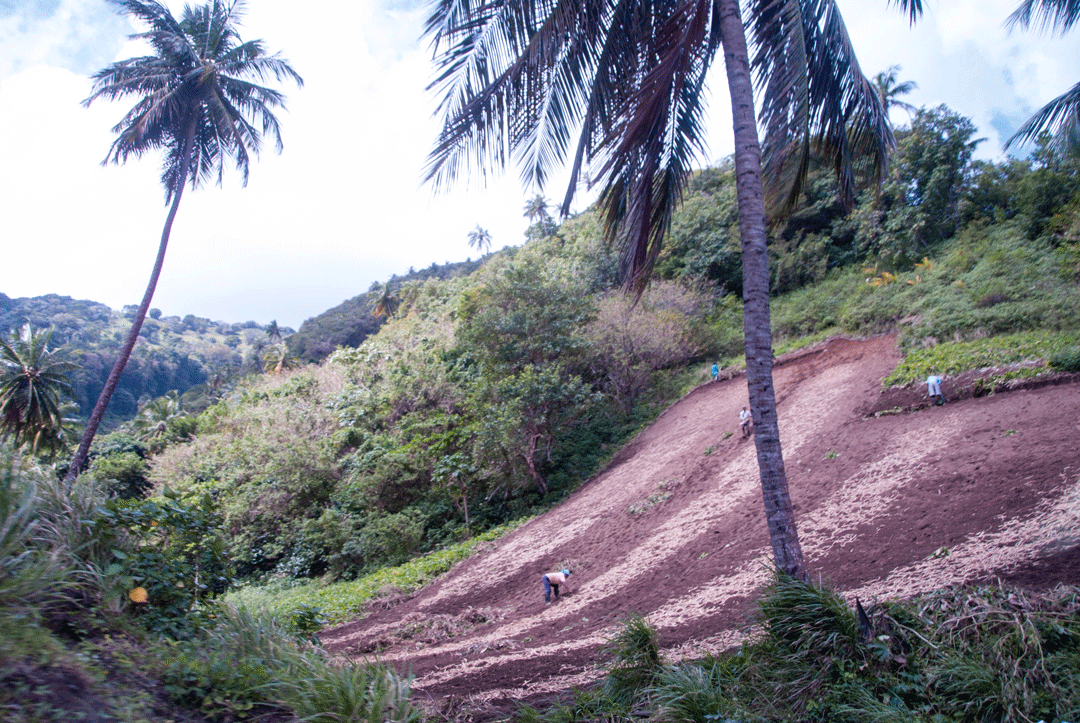
Farming in Saint Vincent is often human-labour-intensive. Although the steep volcanic slopes of La Soufrière can offer rich soils, they also present clear challenges to mechanization and road access. Many farmers must undertake significant hikes to reach their fields. Photo © Julia Wester | Field School
In my classes, I like to ask my students a few questions to illustrate this point: “how many of you believe in climate change?” (everyone raises their hands). “How many of you think that climate change is a pressing environmental problem that will have severe impacts on the planet?” (hands stay up, as these are students dedicating their time and effort to studying conservation). Finally, I ask them “how many of you drove to campus today?” and of course most hands remain up, and everyone looks uncomfortable. I don’t do this out of any desire to shame my students about their choices; I tell them that I usually drive to campus myself. I ask these questions to drive home in a personally relevant way that sometimes knowing and caring about a problem, even to an extreme degree, does not easily translate into behavior designed to address it—because our lives and the choices we make are complex. The same is equally true for the people and communities who are sometimes cast in the role of environmental villains.

Parts of the rugged volcanic landscape of the windward coast of Saint Vincent are difficult to access by land or sea, as they require transit on steep, winding mountain roads or approaching a rocky, wave-tossed shoreline. Fishing on this coast, facing the Atlantic, is more challenging and dangerous than fishing on the leeward side, where vessels are sheltered from the prevailing winds by Saint Vincent's volcano, La Soufrière. Photo © Julia Wester | Field School
There are two primary issues here. One is that a lot of our action around conservation issues is based on the idea that there is a “knowledge gap”—namely, that “if other people knew what I know about shark fisheries, they would also share my values and agree with my ideas about what the right solutions are.” In a lot of cases, this isn’t true, both because it isn’t that easy or convenient to stop doing the harmful thing (like driving to campus) and because they may have different, competing values (even if you convince someone sharks are important, they won’t feel that shark conservation is more important than feeding their children).
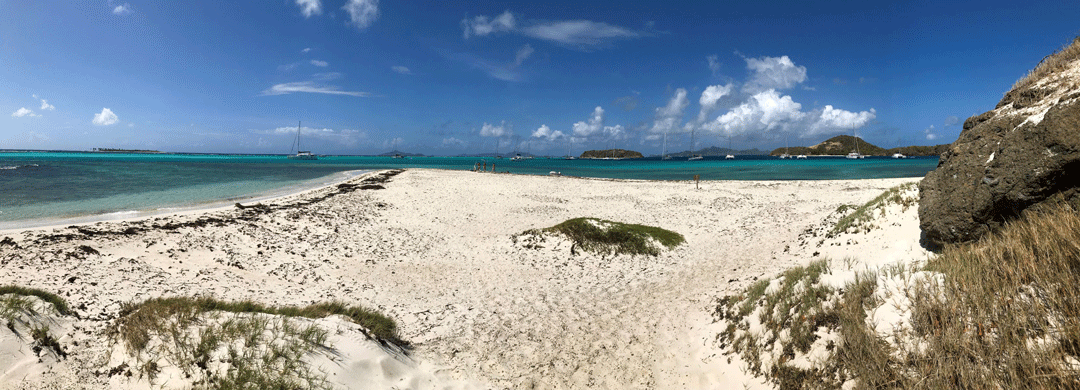
The shallow, crystal-clear waters and white sand beaches of the Grenadines have made them a significant destination for yachting tourists, who are less likely to spend their time in the deeper waters or along the rockier coastline of mainland Saint Vincent. Photo © Julia Wester | Field School
The second issue is that there is no one solution that will work in all situations, everywhere. The problems created by the international fin trade are fundamentally different in scale and type than the conservation challenges created by local subsistence fishermen (and even those can vary a lot!). Local context matters. My research in Saint Vincent and the Grenadines tries to consider these questions in a holistic way, and that starts with understanding the place and the people who live there.
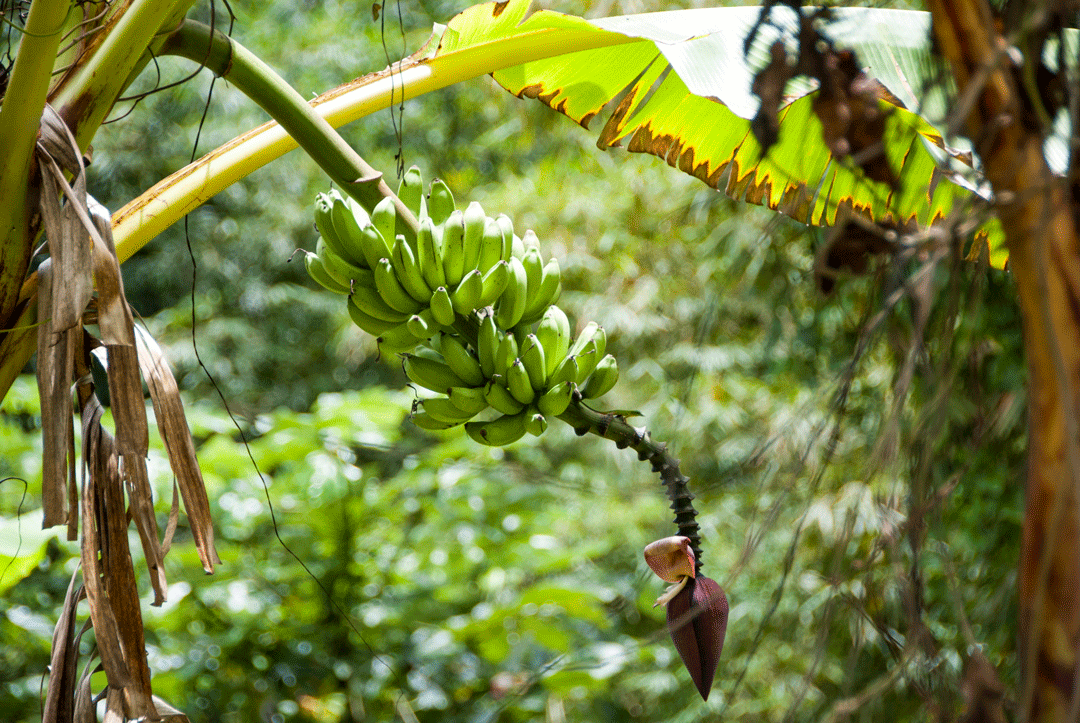
Bananas ripen on the slopes of the volcano. Bananas have historically represented a large percentage of Vincentian export trade, and economic diversification is a current governmental priority. Photo © Julia Wester | Field School
Saint Vincent, the largest island in the country, often referred to by Vincentians as “the mainland,” is a mountainous and lushly forested volcano. The mainland economy is primarily dependent on agricultural exports, especially of bananas. Although there are urban areas on Saint Vincent, concentrated around the capital, Kingstown, substantial portions of the island are sparsely settled and difficult to access because of its rugged terrain. To the south, the smaller islands of the Grenadines are geologically much older, and include seven inhabited islands and many uninhabited cays, all of which are less mountainous and much more arid than Saint Vincent. With beautiful shallow waters and coral reefs, as well as small land masses and limited fresh water available for agriculture, the economy of the Grenadines is more reliant on tourism and fisheries.
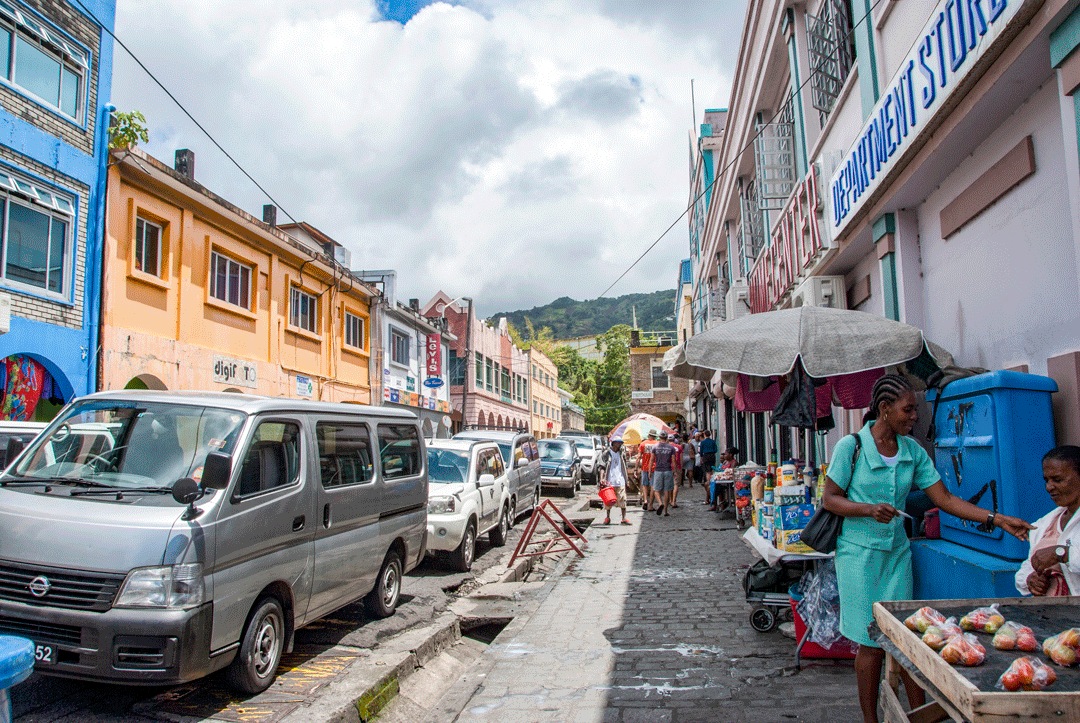
The historic capital city, Kingstown, is home to about a third of the total population of Saint Vincent and the Grenadines. It is a key hub for transit, as cargo ferries depart from the waterfront daily to Bequia, the northernmost Grenadine, and multiple times per week for the more distant islands of Canouan, Mayreau, and Union. Photo © Julia Wester | Field School
Although it is an incredibly beautiful country, Saint Vincent and the Grenadines does not have the volume of tourism infrastructure (or income) of many of its neighbours in the Caribbean. Despite significant national challenges around unemployment and poverty, there is a strong cultural tradition of bartering and sharing of food, from the backyard gardens where people grow root vegetables and fruit to the sharing of fish with those on the beach who help a fisherman haul his boat out of the water. Many part-time fishermen simply fish from shore, and among those who have boats they use in nearshore fisheries, vessels vary from small locally-built rowboats to 20-foot outboard-motor vessels imported from Trinidad and Tobago.
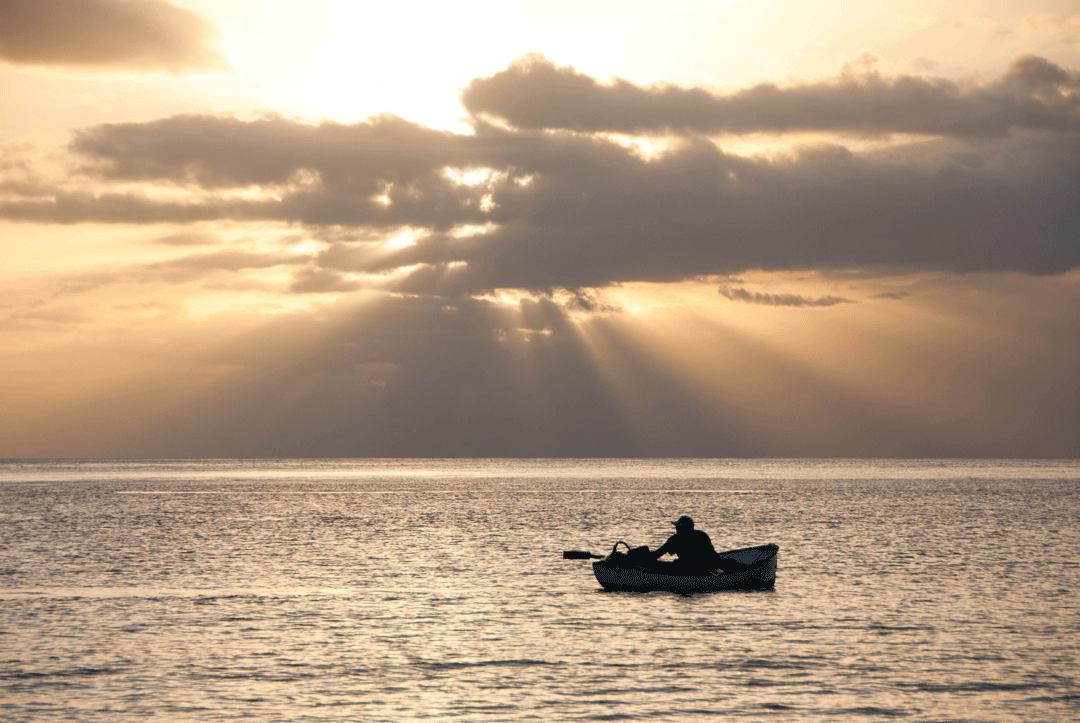
A fisherman rows towards home near sunset on the leeward coast of Saint Vincent. Photo © Julia Wester | Field School
Historically, shark was not a preferred food in Saint Vincent and was almost never targeted by fishermen. When taken as bycatch, a shark’s meat would often be shared out, since the flesh (which often has a smell and taste of urea) doesn’t keep well, and is certainly more palatable fresh. Although it has become a more popularly eaten and preferred food in Saint Vincent in recent years, the vast majority of shark harvest there is still opportunistic (because a shark happens to take a bait or inadvertently gets caught in a net) rather than targeted.
These fishermen could not be further from the enormous internationally-owned industrial fishing conglomerates that have played the largest role in global shark population declines. In evaluating issues affecting shark conservation, it makes sense to try to understand the scale of shark fisheries and the species caught in them, to consider whether existing catches are sustainable or whether different management options should be considered, and to evaluate the long-term costs and benefits of current practices. But regardless of our findings, it helps to remember that fishermen are often our best partners in science, and have the most to lose if we don’t conserve the species their livelihoods depend on.
